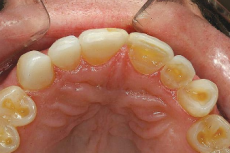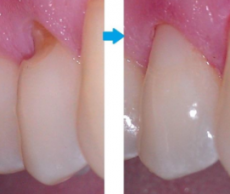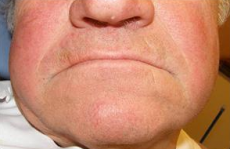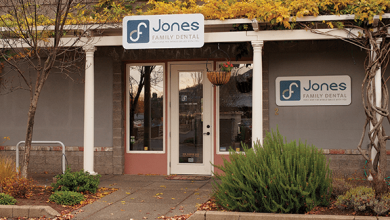The Worn Dentition Part 2
Well last month’s article demonstrated many different types of wear. I discussed some of the causes and referenced some of the long term risks and complications of tooth wear. This month I want to focus on solutions for some of these problems.
First it is crucial to diagnose the causes of tooth wear, and it is important to realize that it is rarely simply one cause. We are seeing more acid erosion connected with the other types of tooth wear. Bulimia, gastric reflux as well as diet are major contributors with systemic treatments and behavior modifications, but in regards to the teeth I would like to demonstrate a case few cases.
Fig 1
Fig 1 is an excellent example of an erosion case caused by severe acid erosion as well as attrition (teeth grinding.) Typical of erosion is wear in areas of no tooth contact. If you notice the three front teeth on the left; they have been restored but more work is needed as you look at the other teeth. Sometimes, erosion caught soon enough, can simply be restored with bonded resin fillings. In those cases we still have enough tooth structure to keep the original bite and won’t compromise esthetics. Of course this will only treat the damage done to the teeth, the cause will still need to be addressed.
Figure 2 demonstrates a very common case of wear with minimally invasive management using a composite resin filling. Often this is related to erosion, or a highly acidic oral environment, and possibly clenching or grinding along with aggressive tooth brushing.
Fig 2
Fig 3 demonstrates the appearance of a person that has jaws that have moved closer to each other than what is esthetically or functionally appropriate (“Bitter Beer Face” or “Bulldog” appearance.) Healthy in tact teeth keep our jaws at the appropriate distance allowing for desirable esthetics but also proper function with regards to the TMJ (jaw joint) and the muscles associated with chewing.
The damage to the teeth in these cases can progress until they look like Fig 4.
Fig 4
Fig 5
In Fig 4 and Fig 5 you can see that the vertical dimension was lost and requires significant work to not only restore the length of the front teeth but restore the jaws to a more appropriate opening. In Figure 5 you can see a more esthetic and functional presentation. Often patients will discuss how much better their jaws feel at the newly restored vertical dimension. This is due to muscles and ligaments functioning at their ideal length.
Fig 6
There are times where patients have significant wear and require full mouth rehab, but may need to work out the details of treatment, want to have time to save some money, or simply wish to know what the treatment may feel like, and in those cases we can construct an appliance as you see in Fig 6. This allows the dentist and the patient to apply and evaluate future treatment with very little expense and no permanent changes to the teeth.
The take away from this article is to realize that there are numerous solutions and approaches to preventing, managing, and treating tooth wear. As with most health care, the best treatment is prevention and early diagnosis. Happy October and remember, smile and the world smiles with you.










